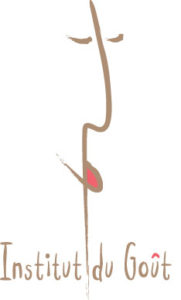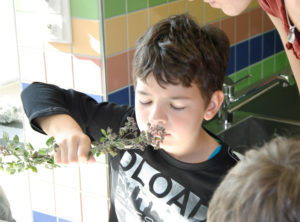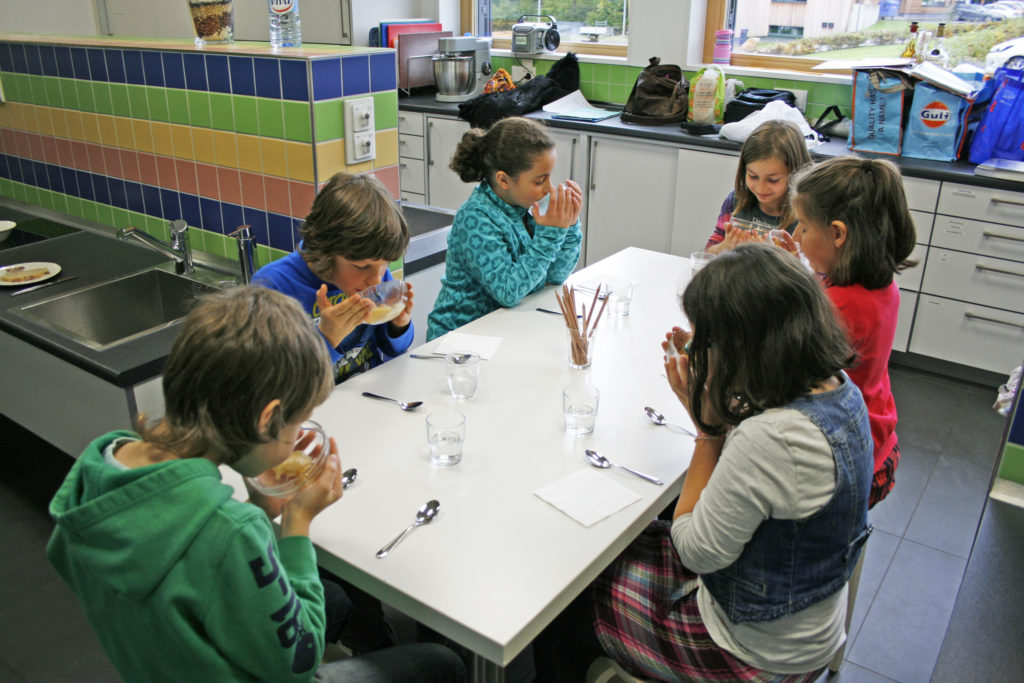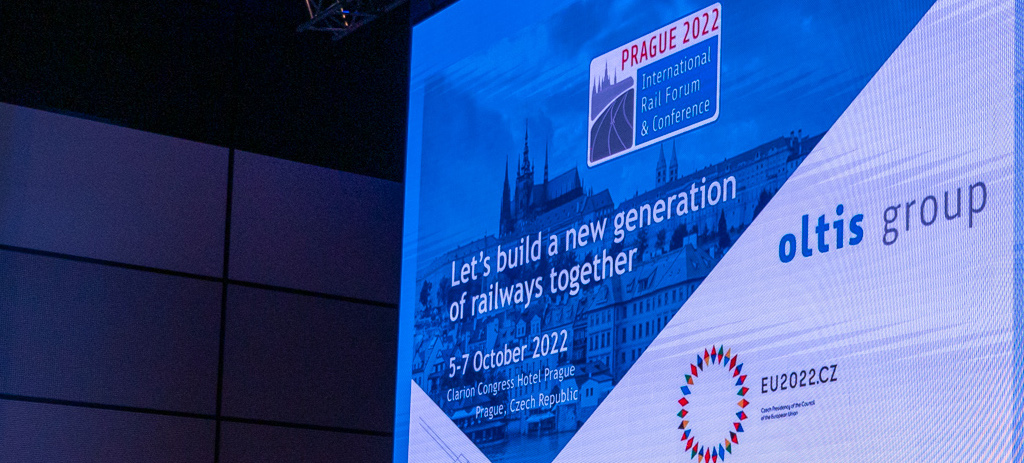 The Roots of Taste Education
The Roots of Taste Education
In France, the father of taste education is Jacques Puisais. In a visionary spirit and very much ahead of his time, he developed a sensory education program for children. In 1974, this program took the form of ten lessons distributed throughout the school year: the first Classes du Goût were born.
Designed for students aged 8 to 11, these sessions explore the mechanisms involved in tasting: the influence of sight on other sensory perceptions, the importance of smell in “taste”, the palette of flavours and trigeminal sensations, tactile sensitivity of fingers and mouth, etc.
In a humanist spirit, as opposed to any form of elitism or normativity, this pedagogy centred on the individual and its sensoriality is radically new: it is a pedagogy that is lived and incorporated by putting the participants in situation. In this pedagogy “unlike any other”, the child learns to make better use of his sensory capacities and to put words on his perceptions. He discovers his own sensitivity to smells and tastes and learns to situate himself in relation to other tasters, while respecting inter-individual differences.
Jacques Puisais and his teams from the French Institute of Taste are working to deploy this educational program throughout France, without ever forgetting how complex the construction of the child’s taste is. Thus, the Institut Français du Goût and later Institut du Goût (founded in 1999 and following the French Institute of Taste) have always been surrounded by researchers from different fields, thus articulating academic knowledge with field practices.
 Content in Perpetual Evolution
Content in Perpetual Evolution
At the time of the birth of the Classes du Goût , Matty Chiva (Director of the Centre for Child Psychology at the University Paris X-Nanterre) wrote: “I am struck by the lack of knowledge and experimental data concerning two sensations considered as archaic, taste and smell, and their place in the individual’s adaptive dynamics“.
Fortunately, the end of the twentieth century saw this ignorance about the eater disappear, thanks to the spectacular progress of taste sciences.
The Institut du Goût applied itself to nourishing the contents of Classes du Goût with this new knowledge:
- Sensory physiology provides decisive data on the origin and extent of differences between tasters. All measures of thresholds show that taste perceptions are extremely variable from one person to another. In the field of olfaction, differences in sensitivity are also a rule. They are easily understood when it is known that the olfactory receptors have a different form from one person to another and they are not activatable by the same odour molecules.
The pedagogical application of these data is immediate and unavoidable: each taster has his own correct answer. The pedagogy of taste thus allows the cultivation of self-confidence, as well as listening and respect for others. - Neuroscience confirms that tasting is a global “reading” of the food. All information from different sensory inputs is gathered in the frontal cortex to form a single, multisensory image. The pedagogy of taste cannot therefore be based on a purely analytical approach; rather, it must take into account the interactions between the senses and go back and forth between “the whole and its parts”.
- Regarding human sciences, experimental psychology and the sociology of food catalyse the progress of taste education. These disciplines provide a very enriching insight into the construction of preferences and eating behaviour, with particular reference to the work on neophobia in children. These studies indicate that neophobia is part of the normal development of the child: generally marked and rigid between 2 and 5 years, neophobia becomes more flexible between 5 and 7 years, then decreases significantly from 7-8 years.
Sensory education courses offered by the Institut du Goût take into account this formidable pool of knowledge about the child’s taste and eating behaviour. They add a rich field experience of several decades, addressing in particular the position of the animator in sensory education. Indeed, the pedagogy of taste requires a great capacity of listening and a finesse of analysis on the part of the animator or the teacher: to manage the children’s’ diverse answers consists in disentangling the effects of imitation within group or vocabulary confusions (for example, “acid” is very often confused with “bitter”) compared to actual differences in perceptions, attributable to differences in equipment in olfactory or taste receptors. The facilitator or teacher will also try to distinguish in the speech of a student the simple repetition of words heard during the sessions in relation to a genuine, personal discourse and really expressing the subjectivity linked to a sensitive experience.
A Booming Pedagogy
The 2000s saw a very strong craze for taste education, probably because of the worrying increase in the prevalence of overweight and childhood obesity and the very limited effectiveness of nutrition education for children to improve the feeding behaviour of children. Since 2010, new societal aspirations, particularly in relation to sustainable food, have further strengthened the interest of the general public and professionals in taste education.
This craze translates into:
- Recognition of taste education by the Ministry of Agriculture and the Ministry of National Education, with respectively a National Food Program (NAP) integrating the Classes du Goût and a mission for the Artistic, cultural and sensory education launched in 2018.
- An increasing number of research programs investigating the effects of taste education on the nutritional behaviour of children.
L The first research project devoted to the effects of taste education is the Edusens program (2005-2009), in which the Institut du Goût took part in collaboration with INRA Dijon. Other research programs have followed the path opened by Edusens in France, but also in Switzerland and Finland, exploring mainly two dimensions: on the one hand the vocabulary of the child, before and after the intervention in sensory education, and on the other hand the evolution of the child’s eating behaviour, especially neophobia, the variety of food and the consumption of certain foods (fruits and vegetables on the one hand, the consumption of which is to be encouraged, and fat-sweet products or fat-salty products on the other hand, whose consumption is to be limited). More and more experimental arguments attest to the effectiveness of taste education in modifying the nutritional behaviour of children by combining hedonism and health. The review of these works also highlights as key factors of success a pedagogy based on lived experiences rather than on cognitive learning, the involvement of a diversity of educational actors (including parents, necessarily) and an inscription of the intervention in the long term. - A variation of the Classes du Goût for families, thanks to the project “Tastes in Family” piloted since 2016 by the Institut du Goût, and the beginnings of an adaptation and a spin-off abroad. Thus, Japan, Luxembourg and French Polynesia have relied on the expertise of the Institut du Goût to adapt the Classes du Goût to their context and food heritage. This confrontation with other food cultures is a great source of inspiration for questioning and continuing to evolve practices in taste education.
Nathalie Politzer
Projects and Training Director
Institut du Goût, 28 Avenue Aumont, 60500 Chantilly, France
E-mail : npolitzer@idg.asso.fr


















